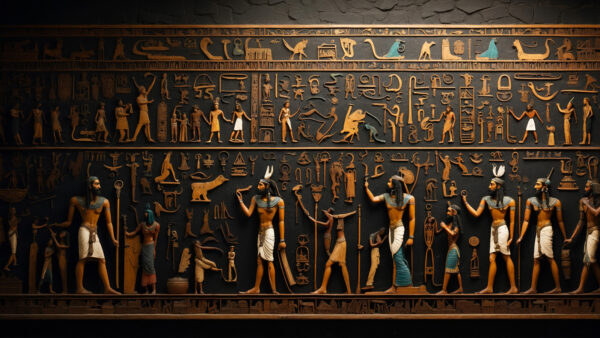
Dictionary projects are notorious for years of intensive labor. The famous example for English is the Oxford English Dictionary. This now standard work took seventy years to complete with the labor of thousands, a process detailed in books like The Professor and the Madman by Simon Winchester. But what about languages that are no longer spoken? What’s the value of creating a dictionary for these ancient words?
After almost 40 years of research, scholars at the University of Chicago’s Oriental Institute have completed a dictionary for Demotic, the everyday language for Egypt from roughly 500 B.C. to 500 A.D. (and featured on the Rosetta Stone, pictured above). The 2,000 page dictionary more than doubles the thousands of known Demotic words and is available online. Egyptologists and other experts expect that the definitions and examples of word use will speed up the translation of Demotic documents, opening up a history of the common people in ancient Egypt in unprecedented ways, reports the New York Times.
“What the Chicago Demotic Dictionary does is what the Oxford English Dictionary does,” said James P. Allen, an Egyptologist at Brown University. “It gives many samples of what words mean and the range and nuances of their meanings.” By having this context, scholars will be able to get a better idea of the writing that deals with everything from family to the law, private letters to scientific texts. Instead of just having “official” histories from the rulers in this period, now the words of Egyptians themselves can be accessed. The result fleshes out a fuller picture of this period of history from what is already known through hieroglyphs.
Demotic is a hard script to read (think of it like shorthand that court stenographers use). The words have no vowels and the difference between it and early Egyptian from the age of the great pyramids (2613-2494 B.C.) is even greater than the difference between the Anglo-Saxon of Beowulf and modern English. Entries in the dictionary are grouped by initial letter and to make identification of words easier, scans from actual documents were used as much as possible for the Chicago Demotic Dictionary entries. Fonts of languages like Coptic were even created specially for the project, showing how the language influenced and was influenced by others in the region.
Even if Demotic is no longer spoken, its influence is still around in words used today. Take the word “adobe,” which comes from “tby,” the Demotic for brick, passing through Coptic and Arabic on its way to Spain. Seeing connections like these help map out not just life in ancient Egypt, but how language connects people across history and the globe today.
Insights for global growth

Power your strategic growth
Go beyond tactical localization with tailored, strategic solutions that resonate locally and drive growth globally.
Get started





